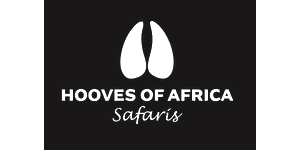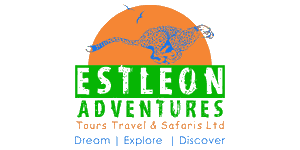
5 Fabulous Facts of the Greater Kudu (Tragelaphus Strepsiceros)
 By Mike Unwin
By Mike Unwin
Mike is an award-winning wildlife writer, former editor of Travel Zambia magazine and author of the Bradt Guide to Southern African Wildlife.
At SafariBookings we love Africa! And not only for the big five. Today we’ll take a closer look at the Greater kudu. The spectacular spiral horns of this handsome antelope – the longest of any antelope – have long made it a favourite among safari-goers and trophy hunters alike.
Belonging to the Tragelaphus genus, alongside the likes of bushbuck and nyala, bulls may stand 1.5 metres at the shoulder and weigh over 250kg. Despite their large size, they are relatively lightly built, and famed for their leaping prowess – able to clear fences and other obstacles with ease. Below are five fascinating facts about the greater kudu.
- Kudu are highly alert and notoriously hard to approach. When they detect danger – often using their large, radar-like ears – they give a hoarse alarm bark, then flee with a distinctive, rocking-horse running motion, the male laying back his horns to avoid overhead obstructions.
- The common name kudu is derived from the indigenous Khoikhoi language of Southern Africa. The scientific name is derived from Greek: Tragos denotes a he-goat and elaphos a deer; Strephis means ‘twisting’ and Keras means ‘horn’.
- The horns of a mature bull kudu have two and a half twists, and, if straightened, would reach an average length of 120cm. However, they may occasionally have three full twists and the record length is a whopping 187.64cm. The horns do not begin to grow until the bull reaches 6–12 months, twisting once at around two-years-of-age and not reaching the full two-and-a-half twists until the age of six. They have long served different traditional communities, as both embellishment and musical instrument, the latter including the shofar, a Jewish ritual horn blown at Rosh Hashanah.
- Male kudus are rarely physically aggressive but may spar during the courtship season, shoving one another with their horns. Occasionally, during these contests their horns become interlocked and, if unable to free themselves, both males may die.
- The traditional sport of Kudu dung-spitting (Bokdrol Spoeg in Afrikaans) is practiced in the South African Afrikaner community. The winner is the contestant who is able to spit one of the antelope’s small, hard dung pellets the furthest – with the distance measured to where it comes to rest. An annual world championship was launched in 1994, with contests held at community events, game festivals and tourism shows. The world record stands at 15.56m, set in 2006 by Shaun van Rensburg Addo.
Want To Go on an African Safari?
Click on the button below to compare African safaris offered by top-rated tour operators.
 By Mike Unwin
By Mike Unwin
Mike is an award-winning wildlife writer, former editor of Travel Zambia magazine and author of the Bradt Guide to Southern African Wildlife.
More About This AuthorAfrican Safari Tours
-
![11-Day Tanzania Safari with Zanzibar Beach Break]()
11-Day Tanzania Safari with Zanzibar Beach Break
$9,199 to $12,299 pp (USD)
Tanzania: Private tour
Mid-range Lodge & Tented CampYou Visit: Arusha (Start), Tarangire NP, Lake Manyara NP, Ngorongoro Crater, Serengeti NP, Zanzibar (End)

Wayfairer Travel
4.8/5 – 184 Reviews
-
![3-Day Endangered Mountain Gorillas (Bwindi Forest)]()
3-Day Endangered Mountain Gorillas (Bwindi Forest)
$1,485 pp (USD)
Uganda: Private tour
Mid-range Lodge & ResortYou Visit: Entebbe (Start), Bwindi Impenetrable NP (Gorillas), Lake Bunyonyi, Entebbe (End)

Hooves of Africa - Photo Safaris
5.0/5 – 23 Reviews
-
![9-Day Splendid Unforgettable Luxury Kenya Safari]()
9-Day Splendid Unforgettable Luxury Kenya Safari
$4,128 to $4,799 pp (USD)
Kenya: Private tourLuxuryLodge & Tented Camp
You Visit: Nairobi (Start), Tsavo East NP, Amboseli NP, Lake Nakuru NP, Masai Mara NR, Nairobi (End)

Estleon Adventures
5.0/5 – 134 Reviews



 Subscribe to our newsletter
Subscribe to our newsletter
 Follow us on Instagram
Follow us on Instagram





